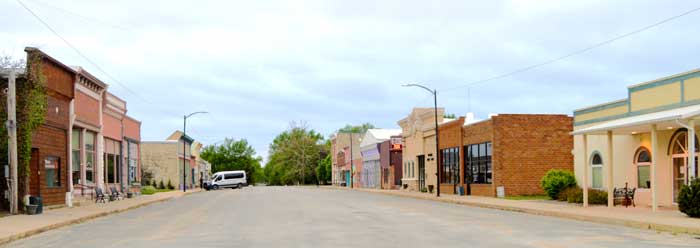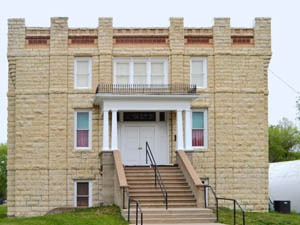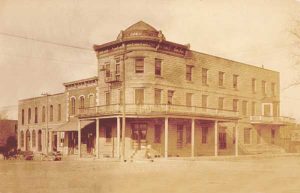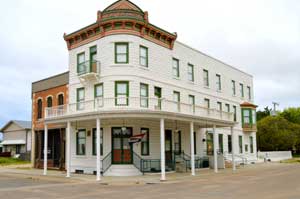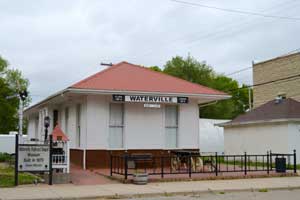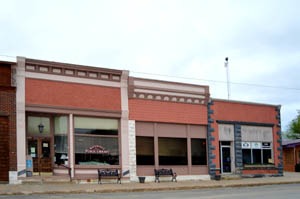Located 15 miles southwest of Marysville on a gentle slope reaching back from the Little Blue River, the town Waterville, Kansas, was established in 1868.
The first settler near Waterville was Stearnes Ostrander, who arrived in the early spring of 1857. That same year, about six more settlers moved to the area along Coon Creek, close to where Waterville would be built. The first mill in Waterville and its nearby areas was built by William Pearsoll in 1858. This mill worked as both a sawmill and a gristmill. In 1859, more settlers arrived and began to take claims in the area.
When the Central Branch of the Missouri Pacific Railroad was on its way through, it decided to extend west precisely 100 miles from Atchison, Kansas. The land was purchased from William Osborn. The railroad reached Waterville in November 1867.
The townsite was surveyed by O. B. Gunn, then Chief Engineer of the railroad, in February 1868. It was named by William Osborne, a railroad superintendent, for his hometown of Waterville, New York. Henry Agle bought the first Waterville lot and erected the first house in town. For a brief time, Waterville, the furthest point west on the railroad, became a cowtown. Stockyards were built to receive the cattle driven up the Eastern Branch of the Chisholm Trail. However, Waterville’s cowtown days were short-lived. Homesteaders, fences, and a government quarantine on tick-infested longhorns ended the cattle drives by the 1870s.
A post office was established on February 18, 1868, and just a few months later, Messrs. Hutt, Niggley, Peters, McCubbin, Fratour, Newell, and others built business houses. W.P. McCubbin occupied a building as a store moved from Marysville in the spring of 1868. The first hotel in Waterville was the Eagle House, erected in the spring of 1868 by Henry Agle. During the same year, the “Bay State House” was erected by August Fromm, who leased it to W. W. Smith. It soon changed hands and was renamed the Lick House.
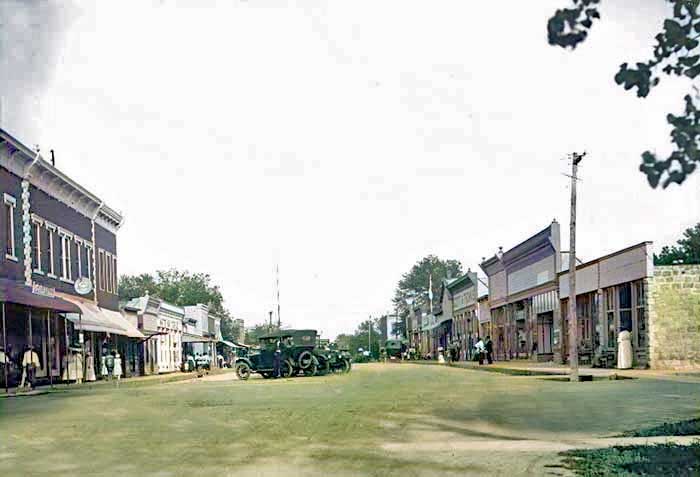
Early 1900s Waterville, Kansas by Leslie Parsons.
In 1869, the town grew rapidly. In the summer of 1869, Miss F. Hartwell taught a school, and the Lutheran Church was established. In the winter of 1869-70, a frame schoolhouse was erected at $1,500, with G. B. Vroom being the first teacher.
The Waterville Telegraph newspaper was established by Frank A. Root and published on January 1, 1870. In the summer of 1870, the city grain elevator was built by Mrs. Johnson & Haskell. On July 30, 1870, Waterville was incorporated. In 1870, Waterville doubled in size, business, and population.
In 1872, a new schoolhouse was built, measuring 40×50 feet. It was two stories with a basement and four rooms. The finest building in that part of the county was built of limestone at the cost of $12,000.
The Riverside Mills, located on the Little Blue River, one-half mile from the business portion of the town, was erected in 1873-74 by R. M. Howard. The building was constructed of stone and was four stories.
The town boasted a couple of church organizations, including the Methodist Episcopal, organized as early as 1868, with services held in the railroad depot. In the summer of 1871, a church was built measuring 36×70 feet. The Baptist Church was organized in 1873, and a brick church was built in 1877.
The Bank of Waterville was established on December 1, 1880, by S. T. Powell. A Cigar Factory was established in August 1882 by G. C. Martin, who made as a favorite brand the “Little Blue.”
The Opera House was built in 1903 at the cost of $8,000. It is now used as a theater for community and school productions.
The Weaver Hotel was built in 1905 across from the Union Pacific Railroad tracks. Passengers waited for their trains in the hotel’s front parlor, found rooms upstairs, ate in the dining room, and crossed the street to the Opera House for performances. Railroad crews stayed at the Weaver while building the railroad further west, and later, it housed the regular train crews. Traveling salesmen, known as drummers, also stayed at the Weaver Hotel in its early years. The impressive Weaver Building was known as the “Pride of the Central Line.” Today, it operates as a beautiful bed and breakfast inn.
In 1910, Waterville had telegraph and express offices, weekly newspapers, grain elevators, banking facilities, a public library, an opera house, a hotel, and good schools and churches. Three rural delivery mail routes went out from the post office. It had a population of 704.
In 1917, the village boasted blacksmith shops, a telephone system, the Weaver Hotel, a drug store, lumber dealers, three banks, barbershops, general merchandise and grocery stores, a moving picture show, and 611 people.
Waterville peaked in population in 1940 at 717 people. Today it has a population of about 651. Today, you will find Victorian homes, the railroad station, and many other historic buildings along tree-lined streets.
The Train Depot, built in 1870, has been restored and houses a museum of Waterville collections. The Game Fork one-room schoolhouse has been restored and is now a meeting place for Scouting activities. It is located in the northeast corner of Turner Park. The Weaver Hotel, built in 1905, is listed on the National Registry of Historic Places, has been completely restored, and today serves as a bed & breakfast inn. Waterville has many fine Victorian Homes; The Powell home on Commercial Street is also on the National Registry. “Banker’s Row,” the 200 block of East Hazelwood, is especially worth seeing.
Waterville is located in southwest Marshall County on the Little Blue River. Highways US 77 and K-9 intersect here.
©Kathy Alexander/Legends of Kansas, updated January 2025.
Also See:
Sources:
Blackmar, Frank W.; Kansas: A Cyclopedia of State History, Vol I; Standard Publishing Company, Chicago, IL 1912.
City of Waterville
Cutler, William G; History of Kansas; A. T. Andreas, Chicago, IL, 1883
Forter, Emma; History of Marshall County, Kansas: Its People, Industries, and Institutions, F. Bowen, 1917
Marshall County
Kansas Historical Society
Waterville Historic Marker
Weaver Hotel
Wikipedia

